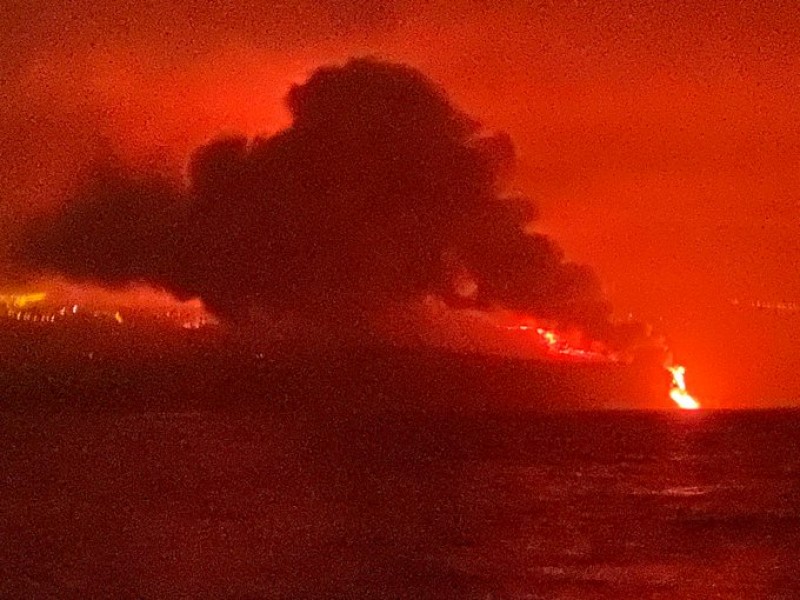Date Published: 30/09/2021
ARCHIVED - La Palma residents return home to collect their belongings
The lava from the volcanic eruption on the Canary Island has created a ‘delta’ as large as 20 football fields

It’s been 12 days since the Cumbre Vieja volcano erupted on the Island of La Palma, and after the lava finally reached the coast on Tuesday night, September 28, it created a pyramid-shaped landmass approximately 50 metres high, shaping a ‘lava delta’ that spans around 500 metres. For now, the prevailing winds are keeping the water vapour and possibly toxic gases produced by the chemical reaction well out of harm’s way.
Nonetheless, homes in the areas of San Borondón, Marina Alta, Marina Baja and La Condesa remain under confinement while an exclusion zone of two and a half kilometres has been implemented. The column of ash and gases that the volcano is emitting has reached 3,500 metres in altitude in the last few hours and the daily discharge of sulfur dioxide has increased to 10,757 tonnes. The ocean around the new lava delta has changed colour, according to Eugenio Fraile from the Spanish Institute of Oceanography (IEO), who watched the lava fall from a 100-metre-high cliff into the ocean aboard the Ramon Margalef, less than one kilometre away.
Imágenes de la erupción a las 20.00 (hora canaria) / Video of the eruption at 8 p.m. (Canarian time) #LaPalmaeruption #ErupcionLaPalma pic.twitter.com/xQtfKnWYep
— INVOLCAN (@involcan) September 27, 2021
According to geologists on the ship, the lava flow formed a kind of channel into the sea and the delta has already extended to the size of 20 football fields. The water around this volcanic mass has naturally begun heating up, and the temperature of the sea reached 26 degrees on Wednesday, up from around 20 degrees when the volcano erupted on September 19.
The experts explain that the water now has more gas content, particularly CO2 and sulfur, and has become more acidic, hence its new turquoise colour.
The latest report from the Department of National Security (DSN) published at 7am on September 30 indicated that since the lava reached the sea, there have been “no substantial changes in volcanic activity” and that the lava continues to produce a relentless stream, like a waterfall, into the ocean. For this reason, the authorities have granted permission to some residents to return to their homes to collect personal belongings, once their properties are outside the 2.5 kilometre exclusion zone. In addition, farmers in El Remo, Puerto Naos and Las Hoyas will be allowed to access their land to irrigate it.
The DSN report estimates that some 476 hectares of land have been destroyed since the volcano erupted, while 981 hectares of infrastructure have been damaged. This, of course, is in addition to the hundreds of homes that were buried by the lava, leaving dozens of families stranded.
Enrichment of the sea bed
The eruption of the volcano has unquestionably caused devastation, both personally and financially, and the repercussions will be felt for many years to come. However, according to Jose Carlos Hernandez, a professor of marine biology at the University of La Laguna, aside from a small collapse of cliffs when the lava flowed off the coast, the environmental damage has been minimal as the volcanic matter entered the sea in an area where marine life was already “quite poor”. The event, he said, could actually prove quite beneficial in the long run.
Mr Hernandez pointed out that once the lava cools completely it will generate a new rocky reef full of intertidal areas, ideal shallow habitats for species of limpet and octopus, and further out new soil will replace the sandy earth where few organisms currently thrive.
Image: Instituto Espanol de Oceanografic
Contact Spanish News Today: Editorial 966 260 896 /
Office 968 018 268


























